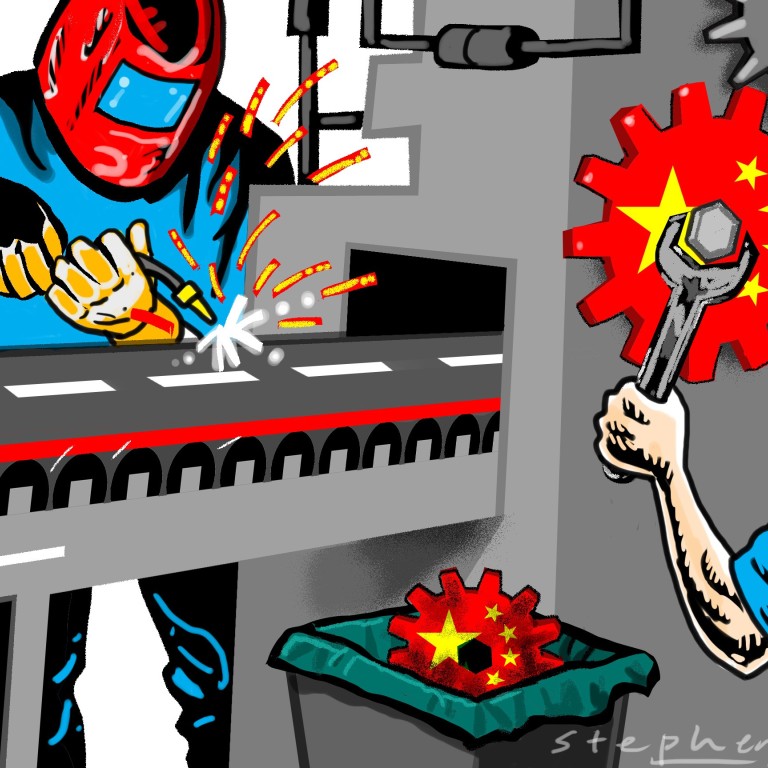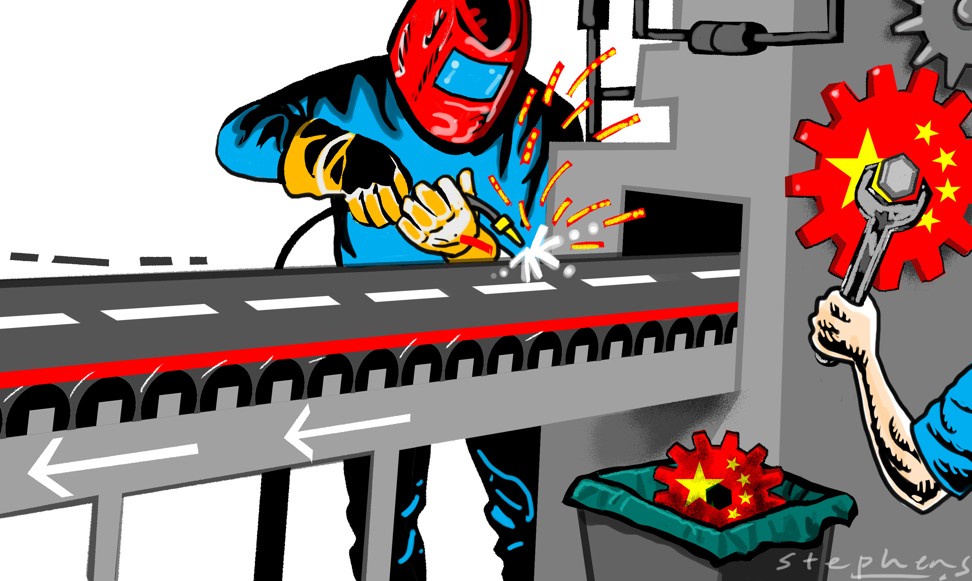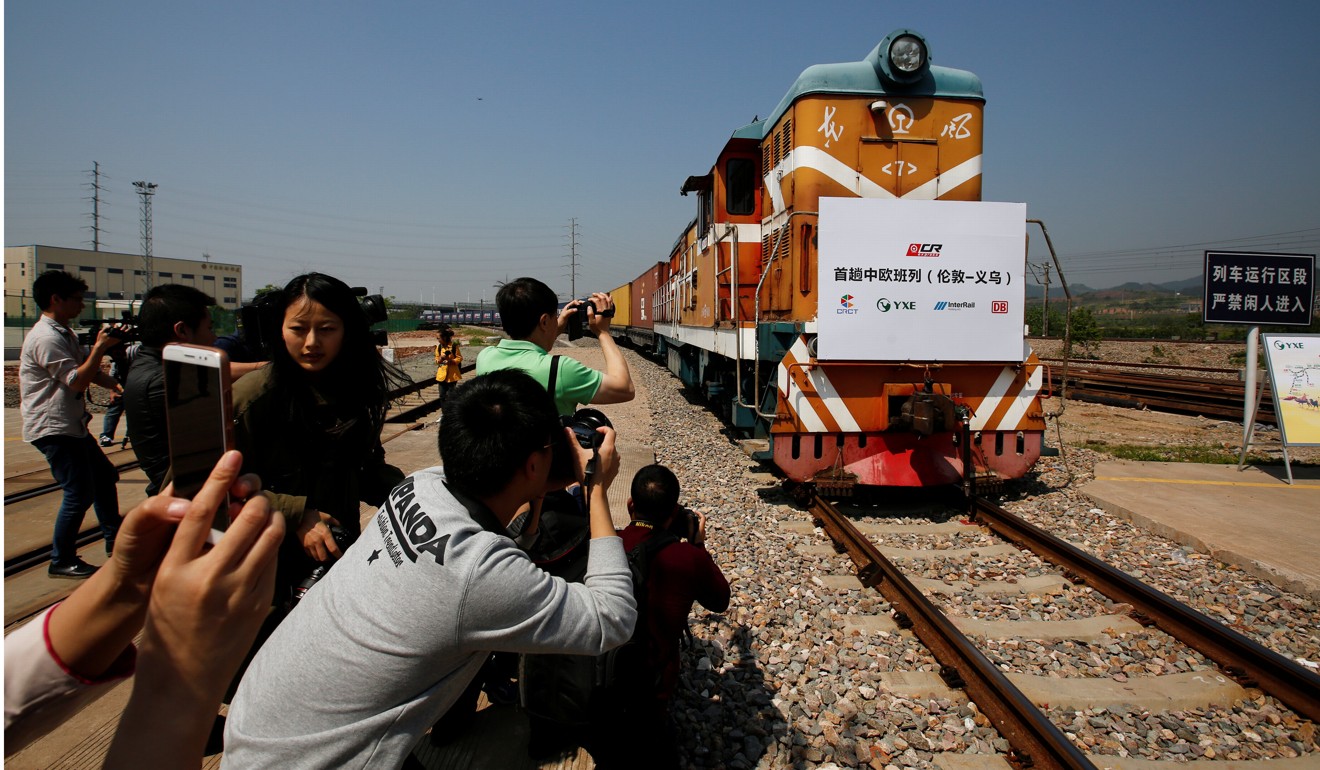
China must reform at home to ensure its belt and road plan succeeds abroad
Andy Xie says to realise its vision of a new economic order, China must have a domestic economy big – and open – enough to anchor the region. Otherwise, the infrastructure projects will become mere islands of modernity amid a sea of backwardness, and fail to generate sustainable growth

China is promising a huge amount of financial resources for the initiative, dwarfing what the existing international financial institutions could deliver. This huge amount, however, is still small, relative to the overall infrastructure needs of these countries. If the China-financed projects become mere islands of modernity amid a sea of backwardness and poverty, they will fail to generate sustainable trade growth – the primary objective of the belt and road.
Vision or mirage? Cashed up and keen, China faces long haul along new Silk Road
The belt and road has sometimes been compared to the Marshall Plan, which the US initiated to help Europe rebuild after the second world war. That worked well because the US was a huge market. Europe and Japan, which also received aid, were too poor to justify the early investment on domestic demand. Export to the US market anchored their investment-led development.
Also, Europe and Japan were advanced economies before they were bombed out. The recovery was about capital only, not culture, labour quality or government institutions.

Multimedia: The five main projects of the Belt and Road Initiative
The belt and road countries are much poorer and less developed than Europe and Japan were. Labour quality and government institutions are works in progress. Their productivity will increase gradually under the best circumstances. Their investment will need an external anchor for demand. But, to where could they export their products? If the investment is only for domestic demand, the development strategy would work too slowly.
When the US initiated the Marshall Plan, its economy was nearly half of the global total. China’s is 15 per cent. Its share needs to double, or more, for the belt and road to make sense in the long run. In addition to size, China must make its currency global and its capital markets accessible to other countries.
China can undertake reforms to double its share in the global economy, and by opening its door to people elsewhere, soft power will come naturally
Doubling China’s share in the global economy is not that hard. China’s size, labour quality and new infrastructure should ensure the country gets there. Its inherent competitiveness justifies far higher wages than one-fifth of the OECD level. Misallocation of resources by the oversized state sector is the key reason China’s wages are being held back.
The belt and road could perpetuate the inefficiency in the state sector. The huge state-owned enterprises that depend on debt now have a new excuse to borrow more. Their inefficiency could be buried under the loans borrowed for the belt and road projects. That would hold China back, and its market would not have the size and growth to power the rapid trade growth for the belt and road countries.
China joined the World Trade Organisation 15 years ago. The government used the ascension negotiations to reform its domestic economy. The improved efficiency plus better market access from joining the organisation propelled a decade of rapid development and made China what it is today. Without those reforms, China would not be in a position to talk about the belt and road today. The clear lesson is that such influence can only come from domestic efficiency.
Will China stay the course to cleanse its corruption-ridden financial system?

China’s intent is to make Eurasia the centre of the world again, after two centuries in which two peripheral countries – Britain and the US – have dominated. Eurasia has the population, land mass and history to justify being the world’s centre of gravity. But it will only happen if Eurasia has an anchoring economy much bigger than America’s. China is the only country that could deliver it this century. The success of the Eurasia project ultimately hinges on whether China can make its domestic economy work.
The success of the Eurasia project hinges on whether China can make its domestic economy work
The belt and road could and should be a catalyst for China to launch another round of reforms. There are some steps that could be taken now to help the belt and road succeed. First, China should open its capital market to the belt and road countries. Their governments should be encouraged to issue renminbi sovereign bonds in China, while their companies, subject to some standards, should be encouraged to issue bonds and stocks in China. The Marshall Plan couldn’t have worked so well if the US financial markets weren’t accessible to its recipient countries. China needs to play the same game.
Second, China should reform its import regime, especially on the distribution side. State-owned enterprises should not have monopolies over the import and distribution of key commodities. China could eliminate import tariffs entirely for the developing economies in the belt and road zone. Market access for them would be more important than direct financial assistance.

Third, China should make it easier for the people from the belt and road countries to work and do business in China. Chinese people take pride in the glories of the Tang dynasty, at a time when Europe was in the dark ages and Islam had yet to rise. But, we must remember that China was extraordinarily open at the time. Without that openness, the Tang achievements would not have been possible. If China desires the same glory today, it must be open to different peoples, cultures and religions. When people from different countries live in China, the linkages they establish with their native lands are far more productive than government-to-government dialogue.
Lessons for China in failed US Silk Road initiative
Some people question China’s ability to make a success of a project as encompassing as the belt and road. China’s economy is not big enough, and its soft power is still weak, they say. But both can be changed. China can undertake reforms to double its share in the global economy, and by opening its door to people elsewhere, soft power will come naturally.
It is in China’s and the world’s interest that the belt and road succeeds. And the key to success is not financial largesse, but reforms within China.
Andy Xie is an independent economist

